
A couple hours south of Izmir lies the city of Ephesus, home to some of the most well preserved Roman ruins in Europe, and the Temple of Artemis, one of the ancient wonders of the world.
When traveling, a balance of history, irreplaceable views, good people, and sufficiently giving into your vices makes for a great trip. An Ephesus tour, seeing a preserved Roman city, trying some good wine, and viewing the temple of a Roman god absolutely filled a couple of those travel needs.
Luckily, the last two months and the trip from Lesvos to Izmir burned me out, so I passed out hard for 10 hours and woke up refreshed at 7am…just in time to pack up and figure out how to move 2 hours to this ancient city. It took having a local walk me to a store to help me buy a metro pass and then pointing me to the Izban (Izmir area metro rail) station, but at 8AM, I was on the first train out to Tepekoy and set to take the second train of the day from Tepekoy to Selcuk.
On the train ride from Izmir to Ephesus via Selcuk, the vistas repeated what I had seen the day before. A dusty landscape with yellow grass was filled with rolling hills in the distance. Deep green plantations and fields of crops and corn filled the expanse between the train tracks and the hills, dotted by modern homes and silos. If I didn’t know any better, I could be back home in inland southern California.
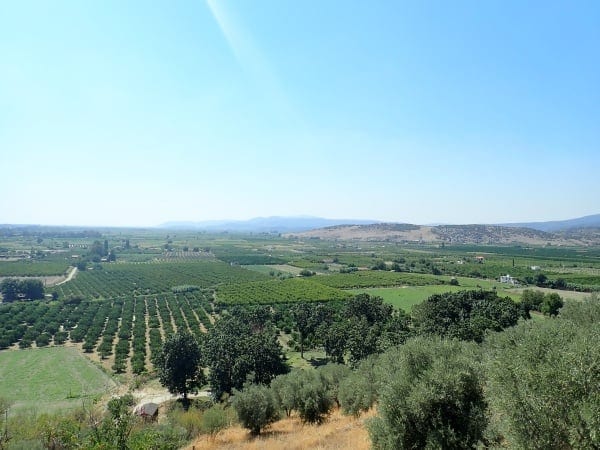
As the train pulled into the “Selcuk Gari”, (Selcuk Station), it was very clear why this little city is a hotspot. Within eyeshot were a series of arches, clearly thousands of years old and immediately inspiring the questions…how the hell could anyone make those without modern machinery? This was going to be an interesting day.
I wandered down the cobblestone streets admiring the ruins that were literally everywhere. The more modern stone buildings in Selcuk aimed to maintain the ancient look, and did so very well. The Main Street was filled with even more magnificence – a towering castle on a hill with the Turkish flag, red with a crescent moon and star, flying high above.
This castle and the ruins of the Basilica where the Apostle John is buried would be my last treats of the day. First, breakfast.
I felt lazy so I turned around to the first shop with pictures of food on the window and asked “breakfast?” The young man nodded, pointed at a street side chair, and disappeared. I thought he would return with a menu but instead he returned with a smorgasbord of delicious olives, fruits, cheeses, honey, and other delicious things. It was amazing.

The bill? A grand total of $3.75 for a Main Street cafe breakfast. I was really starting to like this whole Turkey thing.
After spending an hour enjoying the finer things in life, I hopped a cab for Ephesus, or Efes as the Turks call it – noted as being the “most complete classical metropolis” in Europe. The Turks have been excavating for 150 years and have still only uncovered 18% of the city…but that 18% is amazing.
The ancient city of Ephesus was capital of Roman Asia Minor and even hosted the Temple of Artemis, an ancient wonder of the world that was the biggest temple on earth at one time. By all standards, the city of Ephesus is amazing amazingly preserved, partly due to the silt accumulation that “moved” this port city inland.
The Ephesus Tour: A Walk through the Roman Ruins of Turkey
As the cabbie finished his sales pitch for his version of the Ephesus tour and about how I was missing out by not taking the additional tour to see the Virgin Mary’s home, I paid up, said thanks, hopped out, and headed for the Archeological Park. 50 Turkish Lira later I was wandering on a worn marble path surrounded by huge marble stones, carved, stacked and awe inspiring.
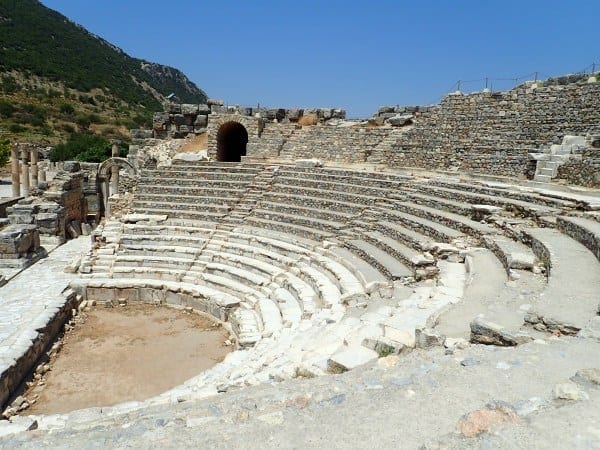
The Bouleuterion, a concert hall, was the first structure I encountered. It served as a meeting hall for the council and was also used for musical performances and presentations. Sitting in the seats with the hilly backdrop to the stage and worn ruins felt strange as I imagined what great things might have taken place here that still affect us today.
After a few minutes of wandering through tunnels and imagining performances, I followed the path on toward the more impressive works.
The marble path led past several structures, gradually more preserved.
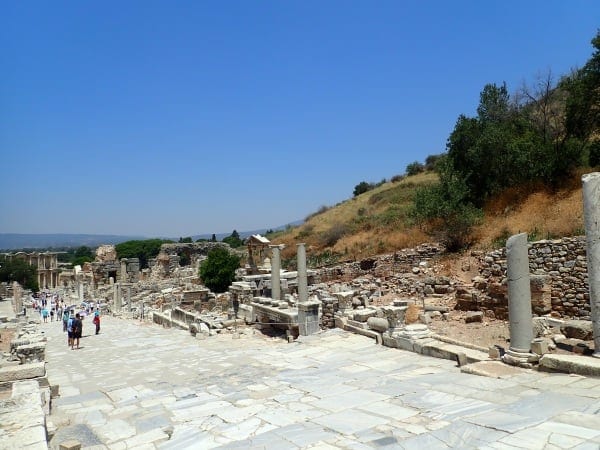
A mansion of sorts, more like an ancient apartment complex with its many rooms, some with ceilings 10 meters high.
The temple of Domitian donated by an undoubtedly wealthy family. A pair of pillars that were all that remained of a barrier designed to be so small that cart traffic could not get through.

The path continued past a second “mansion” that was under intense excavation and meandered up to an extremely impressive and well-preserved piece.
Next was the library. A very impressive Library.

The Library of Celsus was so well preserved and restored that I can’t recall seeing anything so impressive. Though only the front facade and first floor interior are all that remain of the once three-story library, it is still amazing.
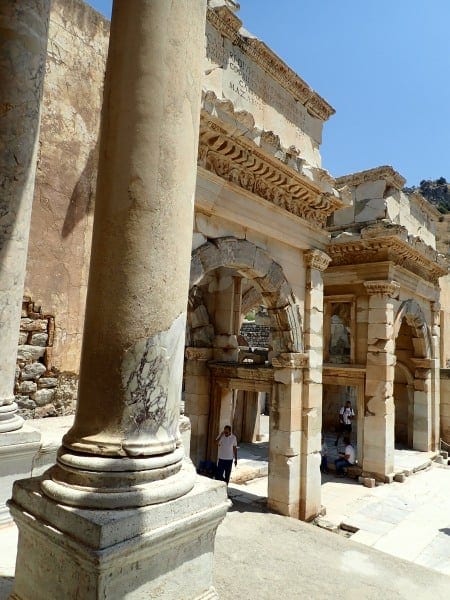
To the right of the library stood a few arches that were the gateway to what was once a vast marketplace, now mere rubble.

I looked at the large trees were shading the area of the old marketplace and though it more interesting that the remnants of the structures that lay beneath the trees, and the men that designed and built them, came long before the trees…as massive and ancient as they were.
After leaving the market area and returning to the main walkway, the path gave way to a large and impressive marble road leading directly to the “Great Theater”.
The great theater dwarfed the Bouleuterion that I initially viewed, seating thousands and hosting everything from concerts to gladiatorial contests in the 3rd century BC. Entering the cool, dark cave at the left of the theater brought an eerie feel as I thought of the fighters that passed through this entryway before risking and giving their lives.
The marble path then continued to possibly the most interesting element of Ephesus…the port.
The marble pathway would be nearly unrecognizable as a port if one did not know the history of Ephesus.
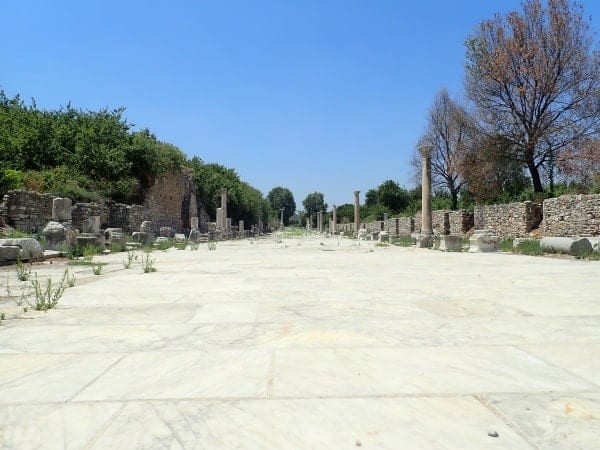
Ephesus was actually a port city in the ancient Roman Empire. At one time, the sea came all of the way up to Ephesus making it a perfect port and way to accumulate the wealth that financed construction of this wonder.
Over time, as the sea pulled back, the city was covered with dirt and forgotten.
With the world’s changes, Ephesus now lies a mile and a half from any waterway and nearly 5 miles from the sea. As great a feat as Ephesus was, standing the test of time, the state and position of Ephesus are a reminder that regardless of how permanent the magnificent things that man makes may seem, there are always stronger forces.
Nature always wins.
After a day spent wandering in the heat, I skittered toward the shade of the trees and out of the west exit of the archeological park to take a “Dolmus”, or shared taxi back to Selcuk.
Not bad for a self-guided tour of Ephesus.
The Basilica of St. John and the Fortress
Once in Selcuk I headed for my initial sight in Selcuk: the Basilica of St. John and the fortress.
Once upon a time at the purported burial site of the Apostle John a humble Church was built over his grave. 6 centuries after his death Justinian I built a basilica in place of the old church to honor the apostle.
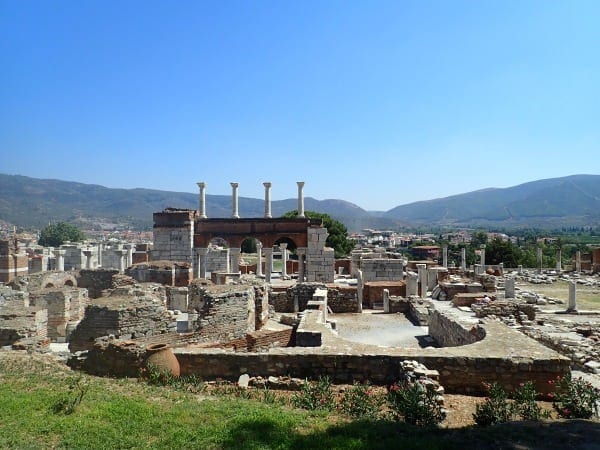
Traveling the world, seeing churches, exquisite and huge, is a very common thing. Centuries old, adorned with paintings and artwork, and well preserved. The striking thing about St John’s Basilica is that it’s not preserved. Looking at how far the ruins span and how high the remaining columns stand gives a clear view of how grand this building once was. Seeing these pieces in ruins, just like Ephesus, gives a clearer view of time and the time that has passed since the structure was built.
I continued thinking of time as I climbed up the hill past the Basilica and toward the fortress.
Like most castles, I’ve seen, in Czech, in Sintra, Portugal, and everywhere else, the inside was unimpressive…but the views the fortress commanded were the complete opposite.
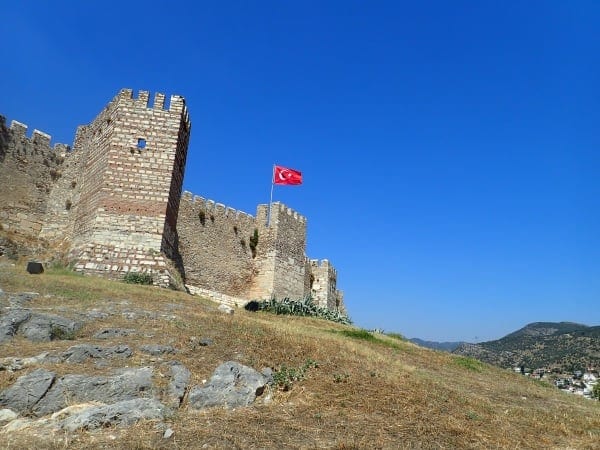
The dusty, greenery covered hills and deep green plantations of Turkey stretched as far as the eye could see. Opposite, white, clay tiled houses in true Mediterranean fashion crawled up the hillside, peaceful, and beautiful

Thoughts of Time
As I walked back towards the Selcuk Gari station, all that remained on my mind was time. These structures lasted thousands of years, as did the names that built them and comprised their history – Justinian, John, Domitian – and were literally etched in stone. What would building something that lasted that long take? What would it take to be remembered that long? Was it even worth it?
Is it really worth sacrificing the present for results in the future that I may never see? I don’t know. Perhaps it depends on the results. Luckily, I don’t have to answer questions like that. I can just live.
I smiled in relief and boarded my train. Turkey was turning out to be more enjoyable, fulfilling, and rich than I anticipated. All I had to do was be curious and soak up the experience.
But, time was passing. I needed to lock down my itinerary for traveling the Middle East. But no sense overly living in the future.
For now, it was time to hop my train and enjoy the Turkish Experience a bit more. Next stop – Izmir.

Interesting things to note about Ephesus
- Ephesus is one of the churches listed in the book of Revelations – and all 7 lie in Turkey. Izmir (my temporary home) is also
listed, but as Smyrna - Ephesus is where the Apostle John is buried
- The Temple of Artemis, located in Selcuk, is one of the Ancient wonders of the world
As rich as my experience in Turkey and Istanbul was, I didn’t nearly get to see everything. If you’re planning to go, I recommend reading my 10 Day Turkey Itinerary filled with everything I did and loved, and all of the things I wish I had done as well


ABOUT THE AUTHOR
Carlos is a nomad, slow traveler, and writer dedicated to helping others live abroad and travel better by using his 7+ years of experience living abroad and background as a management consultant and financial advisor to help other nomad and expats plot better paths for an international lifestyle. Click here to learn more about Carlos's story.


